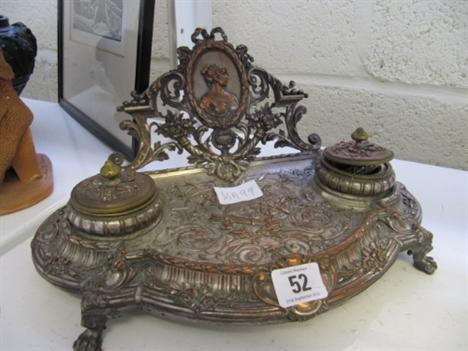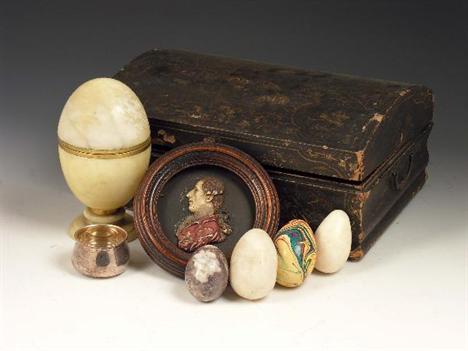Netherlandish School (early 17th Century) Portrait of a Lady, wearing a White Ruff, Lace, Pearls and a Diamond Ring inscribed upper right “Ao Stilo Veteri D 11.7 Bris. Adamo Aet 23”oil on panel 74 x 52cm (28.86 x 20.28in) Provenance: Private collection, Huntingdon, since the late 18th Century The inscription translates: “Anno 1601 old style on the 11 day of September, my truly beloved aged 23”. The painting may well be a wedding portrait - the sitter displays a diamond ring and pearls, signifying purity and innocence. English Protestants, along with Protestants throughout Europe, flatly refused to adopt the new Gregorian calendar introduced in 1582. It would still have been a sensitive issue in 1601, particularly to someone who wanted to emphasise an unequivocal confessional identity. The inscription is all early modern Latin rather than Italian and the sitter is almost certainly English or Dutch, certainly Protestant (hence the use of ‘old style’ as ‘new style’ was Catholic; and ‘old style’ is highly unlikely to be found anywhere in Italy around 1600)
283284 Preisdatenbank Los(e) gefunden, die Ihrer Suche entsprechen
283284 Lose gefunden, die zu Ihrer Suche passen. Abonnieren Sie die Preisdatenbank, um sofortigen Zugriff auf alle Dienstleistungen der Preisdatenbank zu haben.
Preisdatenbank abonnieren- Liste
- Galerie
-
283284 Los(e)/Seite
Attributed to Theodore Russell (British, 1614-1689) Portrait of Honora de Burgh, 1st Duchess of Berwick (1675-1698), wearing Pearls oil on canvas 34 x 27cm (13.26 x 10.53in) Provenance: From a Norfolk country house On the basis of a label on the reverse reading ‘Lady Berrick’ and of the similarity of this portrait with other authenticated likenesses, the painting is believed to be a portrait of Honora de Burgh, dowager Countess of Lucan and Duchess of Berwick. Honora de Burgh (also de Burgo, Burke or Bourke) was one of the most enchanting yet tragic figures associated with the early Jacobite cause. She was born in 1675 at Portumna Castle, County Galway, the youngest daughter of William Burke, the seventh Earl of Clanricarde. In 1689 she married Patrick Sarsfield (circa 1660-1693), one of James II’s military commanders in Ireland who was created the 1st Earl of Lucan in 1691, at Portumna Abbey, when she was only fifteen years old, almost twenty years younger than her husband. Following the defeat of James II’s forces at the Battle of the Boyne in July 1690, Honora fled her home at Lucan in County Dublin and eventually settled with her husband at the Jacobite court in exile at St Germain-en-Laye outside Paris. Now aged nineteen she threw herself into the social life of the courts of James II and Louis IV. She was reckoned among the most fashionable and beautiful women of her time and is said to have introduced the French court to ‘les contredanses Anglais’. Saint-Simon recalled: ‘Elle etait a la premiere fleur de son age, belle, touchante, faite a peindre, une nymphe’. Her husband’s death in battle in 1693 left her widowed with a young son. Two years later she married the young James FitzJames, 1st Duke of Berwick (1670-1734), the eldest of James II’s illegitimate sons by Arabella Churchill, and the commander of the French force in the fighting in which Sarsfield had perished. FitzJames had been created Duke in 1687, served his father at the siege of Londonderry, the Battle of the Boyne and then fought in the French army against England, as a result of which he forfeited his titles in 1695. Honora bore him one son but shortly afterwards became ill following a miscarriage. She was taken to Pezenas in Languedoc in the hope that the milder air might cure her consumption but died there aged twenty-three in 1698 after only four years of marriage. She was buried in the English convent at Pontoise; her heartbroken husband had her heart preserved in a silver box and interred at Pezenas. Her elder son James Francis Edward Sarsfield, 2nd Earl of Lucan (1693-1719), served in both the French and Spanish armies; he died unmarried in St Omer aged twenty-six. Her younger son was James Francis FitzJames Stuart (1696-1738), or Jacobo Francisco FitzJames Stuart, and succeeded his father as 2nd Duke of Berwick (albeit never recognised as such), 2nd Duque de Liria, 2nd Duque de Xerica, but lived his entire life in exile. Further portraits of her are reproduced in Charles Petrie, Marshal Duke of Berwick (London, 1953), from an original in the British Museum, and in Piers Wauchope, Patrick Sarsfield and the Williamite war (Blackrock, 1992), from an original in Kilkenny Castle We are grateful to Dr Joachim Whaley for his help with the catalogue entry
Oil on Canvas Signed George Henry Dated 1902 Portrait of Sir William Barclay of Glenbuchat Bears label to reverse `The New Gallery Exhibition 1903` 119cm x 100cm James William Barclay was a Scottish businessman, farmer and politician who bought in 1901 the Glenbuchat Estate, where he pioneered experiments in new scientific farming methods.
LATE 18TH /EARLY 19TH CENTURY WELSH OAK LONGCASE CLOCK, having flat hood over arched aperture flanked by baluster turned pilasters, plain waist door on panelled base with skirted support. Arch painted dial with bird spandrels and portrait to the arch indistinctly named with “Fishguard”. Eight day two train movement striking on one bell. The face 19” x 13.5”. 88” High overall.
English School, late 16th Century PORTRAIT OF A NOBLEWOMAN, BELIEVED TO BE ELIZABETH THROCKMORTON, MAID OF HONOUR TO QUEEN ELIZABETH I, THREE-QUARTER LENGTH, IN A BLACK DRESS AND RED BODICE WITH WHITE LACE COLLAR Bears inscription l.r. ‘Elizabeth Regina’, inscribed on paper label verso ‘The Pantechnichon The 6th Earl of Arran 3-7-62’, oil on panel 103 x 87cm
-
283284 Los(e)/Seite























































